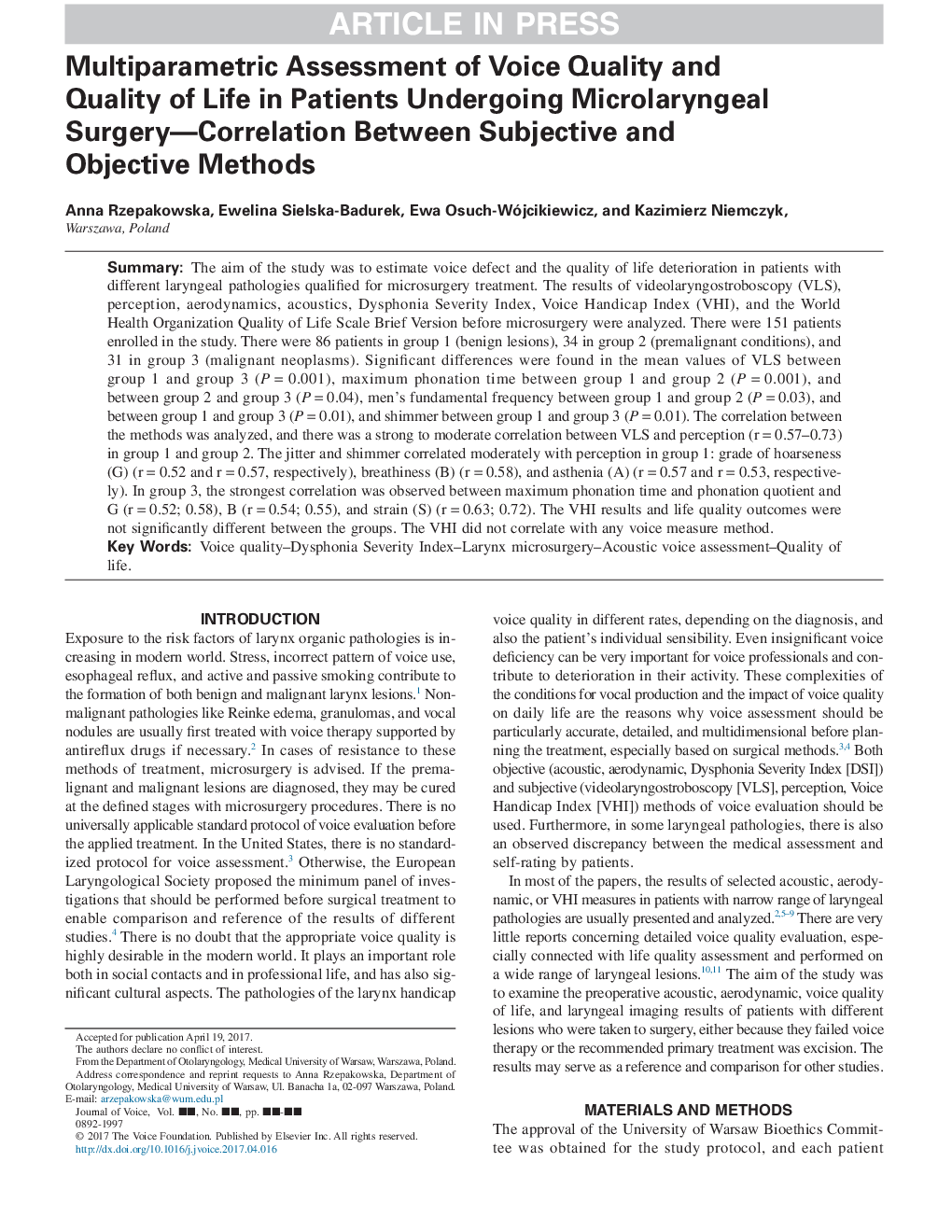| Article ID | Journal | Published Year | Pages | File Type |
|---|---|---|---|---|
| 7533266 | Journal of Voice | 2018 | 10 Pages |
Abstract
The aim of the study was to estimate voice defect and the quality of life deterioration in patients with different laryngeal pathologies qualified for microsurgery treatment. The results of videolaryngostroboscopy (VLS), perception, aerodynamics, acoustics, Dysphonia Severity Index, Voice Handicap Index (VHI), and the World Health Organization Quality of Life Scale Brief Version before microsurgery were analyzed. There were 151 patients enrolled in the study. There were 86 patients in group 1 (benign lesions), 34 in group 2 (premalignant conditions), and 31 in group 3 (malignant neoplasms). Significant differences were found in the mean values of VLS between group 1 and group 3 (Pâ=â0.001), maximum phonation time between group 1 and group 2 (Pâ=â0.001), and between group 2 and group 3 (Pâ=â0.04), men's fundamental frequency between group 1 and group 2 (Pâ=â0.03), and between group 1 and group 3 (Pâ=â0.01), and shimmer between group 1 and group 3 (Pâ=â0.01). The correlation between the methods was analyzed, and there was a strong to moderate correlation between VLS and perception (râ=â0.57-0.73) in group 1 and group 2. The jitter and shimmer correlated moderately with perception in group 1: grade of hoarseness (G) (râ=â0.52 and râ=â0.57, respectively), breathiness (B) (râ=â0.58), and asthenia (A) (râ=â0.57 and râ=â0.53, respectively). In group 3, the strongest correlation was observed between maximum phonation time and phonation quotient and G (râ=â0.52; 0.58), B (râ=â0.54; 0.55), and strain (S) (râ=â0.63; 0.72). The VHI results and life quality outcomes were not significantly different between the groups. The VHI did not correlate with any voice measure method.
Related Topics
Health Sciences
Medicine and Dentistry
Otorhinolaryngology and Facial Plastic Surgery
Authors
Anna Rzepakowska, Ewelina Sielska-Badurek, Ewa Osuch-Wójcikiewicz, Kazimierz Niemczyk,
